ART MOVEMENTS
- Elif Rana YILMAZ
- 23 Ara 2024
- 14 dakikada okunur
Art has always played an important role in sharing ideas and inspiring people. It started a long time ago, during prehistoric times, when early humans carved rocks and stones. While we see these carvings as art today, back then, they were made mainly to be useful. Over time, as life changed and new tools were invented, art also changed, taking on new styles and forms in each era.

The first examples of art were found in caves, like the ones in Lascaux, France. These caves have pictures of animals and carvings on stone, which are thought to be the beginning of art. Early art focused on things like rituals, animals, and everyday objects, often made using natural colors.

Art movements are ideas developed by artists who share a similar view of art and influence various art forms. These ideas come to life through a creative process, resulting in unique works of art. Over time, art movements have continuously evolved, often as a response to earlier ones. They have influenced one another, explored cultural, social, and political themes, and reflected the characteristics of their time.
RENAISSANCE (CLASSICISM)
The Renaissance, meaning "rebirth," was an artistic and cultural movement that spanned from the late 14th century to the early 17th century. It marked the revival of ancient Greek and Roman culture. This era brought significant advancements in art, science, and literature. Key features of the Renaissance include the discovery of perspective, accurate depictions of human anatomy, and a deep focus on observing nature.
During the Middle Ages, science and art were overshadowed by the influence of the Church. However, the Renaissance brought a revolutionary shift in thought, leading to progress in various fields and a fresh worldview. This movement began in Italy and gradually spread across Europe, taking on unique forms in different countries.

Renaissance art primarily focused on religious and mythological themes, with limited attention to daily life. The art of this period emphasized principles such as nobility, rationality, harmony, balance, and beauty.
Technically, Renaissance art adhered to rules of perspective, scale, planning, composition, and the effective use of light and shadow. These techniques resulted in works that were balanced, well-structured, and harmonious.
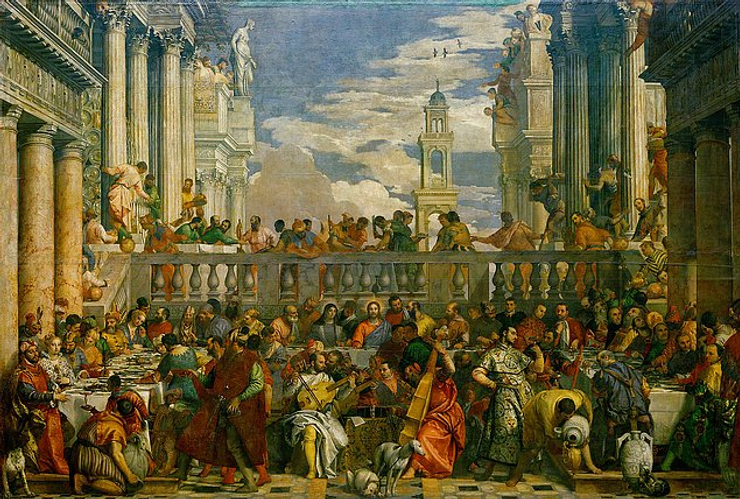
Leonardo da Vinci (1452–1519)
Leonardo da Vinci was a key figure of the Italian Renaissance, celebrated for his exceptional talents as both a painter and a scientist. His renowned works, including Mona Lisa and The Last Supper, are iconic masterpieces of art history.

Beyond his extraordinary artistic talents, Leonardo da Vinci was deeply engaged in scientific exploration. His technical skill as a painter was intertwined with his research in anatomy, astronomy, and engineering. He even demonstrated visionary thinking by designing war machines for military use. Leonardo’s ability to seamlessly blend art and science earned him the title of a true “Renaissance man,” marking him as a genius who profoundly impacted both fields.

MANNERISM (STYLISM)
Mannerism is an art movement that originated in Italy and thrived during the late 15th and 16th centuries. Its name comes from the Italian word "maniera", meaning “style” or “elegant style.” In Mannerism, the connection to real life became less important, as artists prioritized creating original compositions and conveying deep emotions. The movement is characterized by its intricate details, elongated figures, and unconventional perspectives, reflecting a departure from the harmonious ideals of the Renaissance.

There are differing perspectives on the purpose and nature of Mannerism. Some view it as a reaction against the classicism of the Renaissance, while others see it as a natural evolution of Renaissance ideals. For instance, Michelangelo's dynamic figure studies and Raphael's refined elegance are often considered precursors to Mannerism.
Mannerism was shaped by the influence of great Renaissance masters such as Leonardo da Vinci, Raphael, and Michelangelo. However, while Renaissance art focused on proportion, balance, and ideal beauty, Mannerism deliberately exaggerated these principles. Asymmetrical compositions, elongated forms, and a sense of artificial elegance are hallmarks of Mannerist art. The movement, prioritizing originality and dramatic expression, shifted away from realism to highlight emotional depth and theatricality.
Michelangelo Bounarotti

Michelangelo Buonarroti is widely regarded as a pioneer of Mannerism and one of its most significant representatives. His Apocalypse frescoes in the Sistine Chapel in the Vatican are often cited as key examples of the Mannerist style. These works exhibit the defining characteristics of Mannerism, including exaggerated anatomical proportions, intense emotional expressions, and intricate, dynamic compositions that challenge traditional spatial harmony.

BAROQUE
Baroque art is a dynamic and expressive art movement that originated in Italy in the late 16th century and spread throughout Europe until the early 18th century. This period marked a shift away from the Renaissance's emphasis on balance and calm, embracing instead a style full of grandeur, excitement, and movement. The term "Baroque" comes from the Portuguese word barocco, meaning "irregular pearl," which reflects the movement's emphasis on exaggerated, ornate, and dramatic elements. Baroque art often aimed to evoke strong emotions and was characterized by intricate details, vibrant colors, and a sense of theatricality.
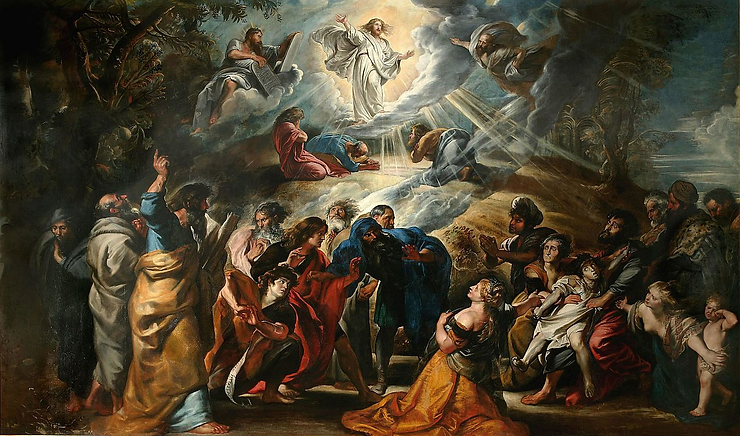
The main characteristics of Baroque art include ostentation, excess, and intense emotions. This movement had a significant impact, particularly in architecture, sculpture, and painting. Baroque artists sought to captivate the viewer through dramatic compositions, the use of strong light and shadow contrasts (chiaroscuro), and intricate details.

Baroque painting often depicted religious themes such as the lives of saints, mythological stories, and heroic tales. A defining feature of the Baroque movement is the dramatic use of light and shadow, known as chiaroscuro, which creates intense contrasts and adds depth and movement to the compositions. This technique heightens the emotional impact of the artwork, drawing the viewer into the scene and enhancing the sense of drama.
Baroque art revolutionized the way Europe viewed art and had a significant influence across various disciplines, including graphic design, interior architecture, and sculpture. The movement's exuberant, bold, and dramatic expression marked a departure from the calm and balanced compositions of the Renaissance. Baroque artists focused on emotional intensity and dynamic movement, establishing these as key elements in the art of the period.
Michelangelo Merisi da Caravaggio
Michelangelo Merisi da Caravaggio (1571–1610) was an Italian painter and an important figure in Baroque art. He is famous for using strong light and dark contrasts in his paintings. Caravaggio painted religious and mythological scenes with realistic and emotional details. Some of his well-known works are The Calling of Saint Matthew and Judith Beheading Holofernes.

Caravaggio's style, unlike traditional art of the time, combined realism with dramatic effects, creating a strong emotional impact. His techniques and powerful expressions helped shape Baroque art and influenced many artists who followed him.

ROCOCO
Rococo is an 18th-century French art movement recognized for its pastel tones, delicate details, and cheerful scenes. It developed as a reaction to the grand and heavy Baroque style, Rococo highlighted aristocratic lifestyles, mythological figures, and social gatherings. Nature motifs, such as flowers, plants, and shells, frequently appeared in its graceful, curved designs, reflecting a refined and decorative aesthetic.
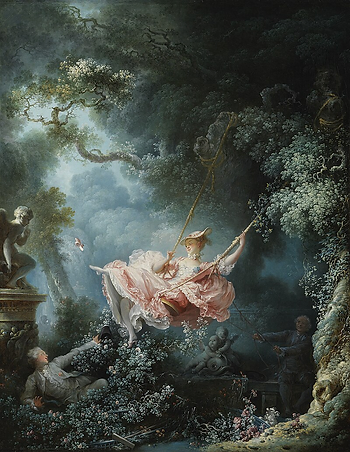
The most notable feature of Rococo is its use of asymmetry, which creates a lively and dynamic effect. The pastel colors give a soft, warm, and inviting atmosphere to the artwork and spaces. Artists of this period used different techniques to make spaces look larger and more impressive. Rococo is also known for its elegant, elaborate designs that reflect the luxurious lifestyle of the aristocracy. These elements made Rococo a distinct and intricate art movement.
François Boucher
François Boucher was one of the most famous painters of the Rococo art movement and a leading designer of the period. Besides his paintings, he also worked in other areas such as tapestries, theater, and costume design.

François Boucher, with his unique painting technique, moved away from the typical lyrical and epic themes of Rococo. He often depicted ancient and classical subjects, including pastoral landscapes and works expressing strong sexual emotions. Boucher became a key figure in Rococo, known for his works that reflected the elegance and decorative style of the movement.
NEOCLASSISM
Neoclassicism was an art movement that began in the late 18th century and continued into the mid-19th century. It aimed to bring back the art of ancient Greece and Rome. This movement influenced architecture, painting, sculpture, and literature, focusing on interpreting classical aesthetics in a modern way.
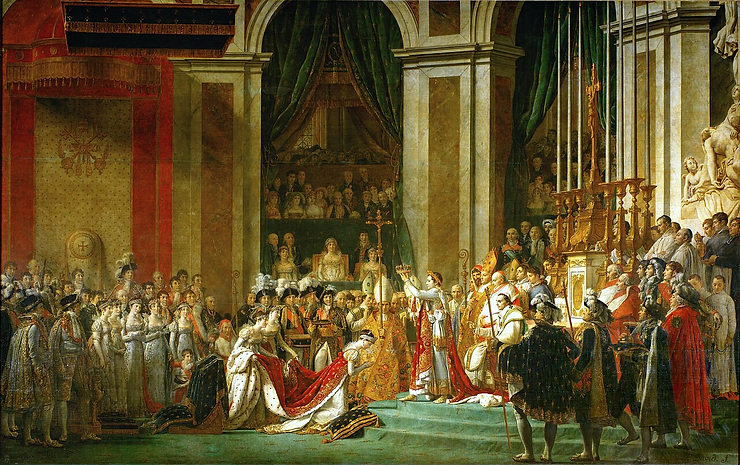
Neoclassicism focused on creating art with symmetry, proportion, and perfection. Artists often depicted mythological stories and historical events, using allegorical symbols for abstract ideas like justice and wisdom. The works featured clear lines, accurate anatomy, and regular compositions. The color palette was typically cold and neutral, reflecting the classical aesthetic.
This movement also had a political and social impact, aligning with the Age of Enlightenment’s focus on reason and order. Art became a tool for spreading revolutionary ideas.

Jacques-Louis David
Jacques-Louis David was a French painter known for his Neoclassical style and is one of the most significant figures in art history. Renowned for his historical paintings and powerful expressions, David distanced himself from the decorative Rococo style and embraced classical ideals. In the 1780s, he combined Rococo influences with classical elements, playing a key role in the transition to Neoclassicism.

With important works like "Le Sacre de Napoléon" and The "Death of Socrates", Jacques-Louis David is regarded as one of the most influential figures in 19th-century French art. His paintings combine historical events, moral values, and dramatic storytelling, leaving both an artistic and political legacy.
ROMANTICISM
Romanticism was an art movement that emerged in the late 18th century and lasted until the mid-19th century. It emphasized emotions, nature, and individual experiences. The movement developed as a reaction to industrialization and urbanization, focusing on the complexity of human emotions and the grandeur of nature. Romantic artists sought to explore the fragility of human life and the beauty of the natural world.

Romanticism focused on emphasizing inner feelings and imagination in art and literature. Artists reflected their personal emotions and sought to understand the depths of the human soul. The movement highlighted freedom, self-expression, and the importance of individual experiences.
Romantic painters were deeply fascinated by nature, often portraying landscapes not just as backgrounds but as reflections of the human soul. For them, nature was a powerful expression of deep emotions and a source of inspiration.

Landscape paintings in Romanticism often portrayed nature with a dramatic and awe-inspiring atmosphere. Artists used powerful elements like storms, volcanic eruptions, mountains, and oceans to highlight the smallness and fragility of humans in the face of nature. These works emphasized nature as both a frightening and fascinating force, while glorifying its splendor and power, allowing the viewer to form a deep emotional connection with the natural world.
Eugène Delacroix
Eugène Delacroix, a key figure in the Romanticism movement, combined the classical focus on the human figure with the emotional depth and drama of Romanticism. His works emphasized human emotions and dramatic moments, blending traditional and innovative artistic elements. Delacroix's unique style significantly influenced the development of Romanticism, helping to usher in a new era in art.

REALISM
Realism emerged in France in the mid-19th century, particularly after the French Revolution. This movement was a response to the idealized visions of Romanticism, focusing instead on the real, everyday lives of people and contemporary social issues.

Realist artists aimed to depict social classes, workers, rural life, and ordinary people, moving away from idealized or sentimental subjects. They focused on the true, everyday lives of people rather than mythological or heroic themes.
Realism emphasizes portraying the world in a simple, natural way, with accurate proportions, light, and detailed descriptions. It avoids ornamentation and focuses on the banality of life and social issues, making it not just an art movement, but also a social one. Realist artists prioritized objectivity and aimed to show life as it truly is, without personal feelings or idealization.
Jean-François Millet
Jean-François Millet focused on depicting the lives of peasants rather than city life, showing the working conditions of agricultural workers in a realistic way without romanticizing them. He explored the deep connection between humans and nature, particularly highlighting the bond peasants had with the land and the struggles they faced. Millet's works celebrated the hard work of peasants and presented the challenges of their lives from a human, empathetic perspective.

IMPRESSIONISM
Impressionism is an art movement that began in France in the mid-19th century. It got its name from Claude Monet's painting "Impression, Soleil Levant" (Impression, Sunrise). Impressionist artists focused on capturing the changing and fleeting effects of nature, often painting outdoors. They particularly emphasized how sunlight and shadows affected objects. This approach transformed art and became a key foundation of modern art. Impressionism allowed artists to freely express themselves and helped viewers feel the beauty of light and color in a new way.

The Impressionists moved away from traditional studio painting and instead used bright, vivid colors with short, broken brushstrokes. They avoided using colors like black and brown, instead painting shadows with cooler tones and highlights with warmer ones. This movement focused on capturing the overall visual effect, rather than fine details, reflecting nature through the artist's immediate feelings and impressions.
Claude Monet
Claude Monet is regarded as one of the key figures in the Impressionism movement. He focused on capturing the natural world and the effects of light. As an outdoor painter, he often painted the same subject multiple times, using a series of canvases to depict a landscape from various angles and lighting conditions over a long period. By emphasizing the changing effects of light and color, he created a new work with each shift in light.

Monet focused more on light, color, and immediate impressions rather than on precise forms. This approach challenged traditional art and introduced a fresh perspective. Despite the blurred shapes in his paintings, Monet's works create a strong impact through the vivid beauty of colors and light.
POST-IMPRESSIONISM
Post-Impressionism emerged in the 1880s as a response to Impressionism, while keeping some of its core elements but offering a new perspective. This movement didn't focus on creating entirely realistic or completely abstract works. Instead, it highlighted the abstract aspects of daily life, with figures and objects sometimes changing in shape and form. Colors could also move away from reality, becoming more vivid. Post-Impressionism blended instant impressions with emotional and abstract ideas, often distorting anatomy and playing with vibrant color contrasts.

Post-Impressionism built on the color and vibrancy of Impressionism but went further by incorporating emotions, thoughts, and experiences that were not always visible. This approach allowed for the introduction of abstract ideas into art, taking the Impressionist style to a more advanced level. By blending emotional and symbolic expressions with everyday life, the Post-Impressionists helped lay the groundwork for modern art.
New Impressionism acted as a bridge between Impressionism and modern art, bringing individual and abstract expressions into the art world. It also played a crucial role in the development of modern movements like Fauvism and Cubism.
Vincent Van Gogh
Vincent Van Gogh is one of the most famous and influential artists in history. His challenging life and mental health struggles deeply affected his work, causing him to express the principles of Impressionism in a more emotional and personal way. Van Gogh's paintings go beyond simple depictions of nature—they tell a story and take viewers on an emotional journey.

Van Gogh’s unique approach to art is evident in his bold use of color and expressive brushstrokes. These techniques allow his paintings to resonate with viewers on an emotional level, not just a visual one. For Van Gogh, nature was more than a subject—it was a reflection of the human soul, and he captured his personal emotions and impressions through his art.
FAUVISM
Fauvism, emerging in the early 20th century in France, is an art movement known for its bold use of bright, vivid colors and simplified forms. Fauvist artists prioritized the emotional impact of colors, rejecting traditional color theories and the rules of realism. Their works often convey strong emotions through color, rather than focusing on realistic depictions.

Fauvist painters used color freely as a way to express emotions, moving away from the natural colors of objects to create bright and striking palettes. This bold approach to color was paired with strong compositions, focusing on both emotional and aesthetic expression.
Though short-lived, Fauvism was significant in the development of modern art. Its focus on the power of color influenced later movements and marked a key turning point in art history.
Henri Matisse
Henri Matisse (1869-1954) is regarded as one of the most significant French painters of the 20th century. He made important contributions to the development of modern art, particularly as a leading figure in the Fauvism movement. Matisse was known for his bold use of color and innovative approaches to form and composition, shaping the direction of modern artistic expression.

Matisse emphasized the independence and expressive power of colors, pushing the boundaries of modern art with his use of exotic and vibrant color palettes. For him, colors became a powerful means of expression, reflecting not just reality, but also emotions and moods. His works are known for their vibrant colors and simplified forms, yet each painting carries a deeper search for meaning and a sense of freedom.
FUTURISM
Futurism is an art and literature movement that began in Italy in the early 20th century and spread worldwide. Rejecting traditional art forms, Futurism focused on the future, celebrating speed, dynamism, and modern life. Artists emphasized movement, technology, and the energy of modern society, aiming to capture the essence of progress and change in their works.

Futurism rejected the idea that art should only reflect beauty. Its key features include rhythm, dynamism, and the depiction of simultaneous movement. The movement sought to visually express speed and motion, focusing on the energy of modern life.
Aiming to break from past art forms, Futurism emerged in Italy as a radical movement, influenced by ideas of war, the rise of machines, and fascism. It expressed social dynamism and change, symbolizing the excitement and desire for transformation in a new, modern world.
Umberto Boccioni
Umberto Boccioni (1882-1916), an Italian painter and sculptor, was a key figure in the Futurism movement. He played a crucial role in shaping the Futurist aesthetic with a focus on movement and dynamism, rejecting traditional artistic conventions. Boccioni's works often depicted human figures in motion, emphasizing their fluidity and transformation rather than presenting them as static. He sought to express the speed, flow, and constant change of time, bringing these elements into his art.

CUBISM
Cubism, developed by Pablo Picasso and Georges Braque between 1907 and 1914, revolutionized the art world by rejecting traditional perspective and introducing a method where objects could be viewed from multiple angles simultaneously.
Artists reduced objects to geometric shapes and assembled them from different perspectives, allowing for a deeper, more holistic view of reality. This groundbreaking movement not only influenced painting and sculpture but also had a significant impact on literature, architecture, and the wider realm of modernism, marking a pivotal moment in the evolution of art.

Cubism is defined by its use of geometric shapes, multiple perspectives, and the fragmentation and reassembly of objects. It features a limited color palette and emphasizes abstraction, moving away from the traditional artistic representations of reality. By focusing on the basic building blocks and essences of objects, Cubism challenged conventional art forms and became a crucial force in the development of modern art, pushing the boundaries of how we perceive and represent the world.
Pablo Picasso
Pablo Picasso is a pioneering figure in the art world, particularly known for co-founding Cubism. Although his early works explored various styles, it was his 1907 painting Les Demoiselles d'Avignon that laid the foundation for Cubism. In this groundbreaking piece, Picasso departed from traditional art by reducing figures and objects into geometric shapes and incorporating multiple perspectives. This innovative approach marked a shift towards more abstract representations of space, figures, and perspectives, fundamentally changing how art was understood and creating a new visual language that would influence generations of artists.
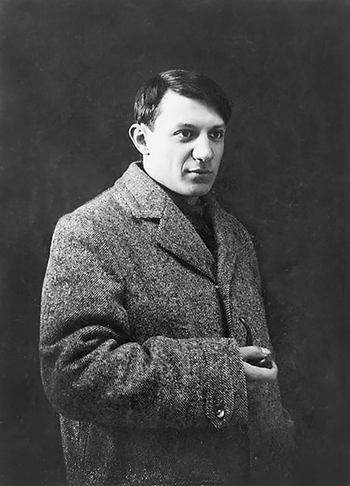
Picasso's contributions to Cubism brought a groundbreaking innovation to the art world, fundamentally transforming its meaning and boundaries. His works marked a turning point, not just in aesthetics but also in the intellectual experience that art offers to viewers. Through Cubism, Picasso redefined artistic expression, breaking away from traditional perspectives and exploring new ways to represent reality. This revolutionized how we perceive and experience art, leaving a lasting impact on his paintings and influencing the evolution of modern art. His exploration of forms, perspectives, and abstraction became key elements of his artistic identity.

Yorumlar